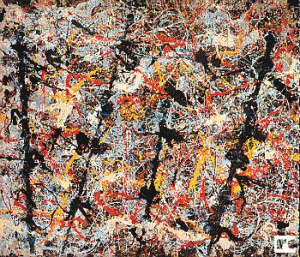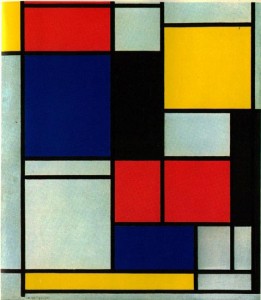JISC has provided CETIS with funding to commission a series of OER Technical Mini Projects to explore specific technical issues that have been identified by the community during CETIS events such as #cetisrow and #cetiswmd and which have arisen from the JISC / HEA OER Programmes.
Mini project grants will be awarded as a fixed fee of £10,000 payable on receipt of agreed deliverables. Funding is not restricted to UK Higher and Further Education Institutions. This call is open to all OER Technical Interest Group members, including those outwith the UK. Membership of the OER TIG is defined as those members of oer-discuss@jiscmail.ac.uk who engage with the JISC CETIS technical discussions.
The CETIS OER Mini Projects are building on rapid innovation funding models already employed by the JISC. In addition to exploring specific technical issues these Mini Projects will aim to make effective use of technical expertise, build capacity, create focussed pre-defined outputs, and accelerate sharing of knowledge and practice. Open innovation is encouraged: projects are expected to build on existing knowledge and share their work openly.
It is expected that three projects will be funded in the first instance. If this model proves successful, additional funding may be made available for further projects.
Technical Mini Project Topics
Project 1: Analysis of Learning Resource Metadata Records
The aim of this mini project is to identify those descriptive characteristics of learning resources that are frequently recorded / associated with learning resources and that collection managers deem to be important.
The project will undertake a semantic analysis of a large corpus of educational metadata records to identify what properties and characteristics of the resources are being described. Analysis of textual descriptions within these records will be of particular interest e.g. free text used to describe licence conditions, educational levels and approaches.
The data set selected for analysis must include multiple metadata formats (e.g. LOM and DC) and be drawn from at least ten collections. The data set should include metadata from a number of open educational resource collections but it is not necessary for all records to be from oer collections.
For further background information on this topic and for a list of potential metadata sources please see Lorna’s blog post on #cetiswmd activities
Funding: £10,000 payable on receipt of agreed deliverables.
Project 2: Search Log Analysis
Many sites hosting collections of educational materials keep logs of the search terms used by visitors to the site when searching for resources. The aim for this mini project is to develop a simple tool that facilitates the analysis of these logs to classify the search terms used with reference to the characteristics of a resource that may be described in the metadata. Such information should assist a collection manager in building their collection (e.g. by showing what resources were in demand) and in describing their resources in such a way that helps users find them.
The analysis tool should be shown to work with search logs from a number of sites (we have identified some who are willing to share their data) and should produce reports in a format that are readily understood, for example a breakdown of how many searches were for “subjects” and which were the most popular subjects searched for. It is expected that a degree of manual classification will be required, but we would expect that the system is capable of learning how to handle certain terms and that this learning would be shared between users: a user should not have to tell the system that “Biology” is a subject once they or any other user has done so. The analysis tool should be free to use or install without restriction and should be developed as Open Source Software.
Further information on the sort of data that is available and what it might mean is outlined in my blog post Metadata Requirements from the Analysis of Search Logs
Funding: £10,000 payable on receipt of agreed deliverables.
Project 3: Open Call
Proposals are invited for one short technical project or demonstrator in any area relevant to the management, distribution, discovery, use, reuse and tracking of open educational resources. Topics that applicants may wish to explore include, but are not restricted to: resource aggregations, presentation / visualisation of aggregations, embedded licences, “activity data”, sustainable approaches to RSS endpoint registries, common formats for sharing search logs, analysis of use of advanced search facilities, use of OAI ORE.
Funding: £10,000 payable on receipt of agreed deliverables.
Guidelines
Proposals must be no more than 1500 words long and must include the following information:
- The name of the mini project.
- The name and affiliation and full contact details of the person or team undertaking the work plus a statement of their experience in the relevant area.
- A brief analysis of the issues the project will be addressing.
- The aims and objectives of the project.
- An outline of the project methodology and the technical approaches the project will explore.
- Identification of proposed outputs and deliverables.
Proposals are not required to include a budget breakdown, as projects will be awarded a fixed fee on completion.
All projects must be completed within six months of date of approval.
Submission Dates
In order to encourage open working practices project proposals must be submitted to the oer-discuss mailing list at oer-discuss@jicmail.ac.uk by 17.00 on Friday 8th April. List members will then have until the 17th of April to discuss the proposals and to provide constructive comments. Proposals will be selected by a panel of JISC and CETIS representatives who will take into consideration comments put forward by OER TIG members. Successful bidders will be notified by the 21st of April and projects are expected to start in May and end by 31st October 2011.
Successful bidders will be required to disseminate all project outputs under a relevant open licence, such as CC-BY. Projects must post regular short progress updates and all deliverables including a final report to the oer-discuss list and to JISC CETIS.
We encourage all list members to engage with the Mini Projects and to input comments suggestions and feedback through the list.
If you have any queries about this call please contact Phil Barker at phil.barker@hw.ac.uk

![Monochrome bleu sans titre [Untitled blue monochrome], 1960](../../wp-content/uploads/sites/25/2011/02/yvesklein-232x300.jpg)


